Eyespot mouthbrooder - Betta ocellata
Scientific name: Betta ocellata
Common name: Eyespot mouthbrooder
Family: Osphronemidae
Usual size in fish tanks: 10 - 11 cm (3.94 - 4.33 inch)
014
Recommended pH range for the species: 6.3 - 7.7
Recommended water hardness (dGH): 4 - 18°N (71.43 - 321.43ppm)
0°C 32°F30°C 86°F
Recommended temperature: 23 - 26 °C (73.4 - 78.8°F)
The way how these fish reproduce: Spawning
Where the species comes from: South Asia
Temperament to its own species: peaceful to females
Temperament toward other fish species: peaceful
Usual place in the tank: Top levels
Origin
Betta ocellata originate from South Asia, they are to be found in Malaysia, Borneo and Indonesia where they occupy small streams and floodplains.
Short description
The Betta ocellata are commonly referred to as the Eyespot mouthbrooder and are readily available in the aquarium trade. They are extremely peaceful and should not be housed with any species that may intimidate them in the aquarium or they will become extremely skittish and prone to bullying. They have long, slender bodies and usually occupy the higher levels in the aquarium. LIke all the Betta species they belong to the family of Osphronemidae along with hundreds of closely related species. Adult specimens will reach an average size of up to 3.5 - 4.5 inches making them ideal for medium sized aquariums. Sadly they are often kept in small jars or bowls which are definitely not ideal.
Lifespan
If cared for correctly the average lifespan for Betta ocellata will be expected to be at least 4 years.
General care
The minimum sized aquarium that should be used to house these fish will need to be at least 3 feet (90 cm) in length and 1 foot (30cm) wide. As these fish occupy the higher levels the substrate is purely a matter of personal choice but if using gravel ,make sure that is has no sharp edges. The water temperature should range between 23-26°C (74-79°F) and the ph should range between 6.3-7.7. The addition of bogwood or similar will allow for hiding places and keep the lighting low to medium to make these fish feel secure. Never add these fish to an immature setup, they need stable water parameters and they should be acclimatised slowly when adding to the aquarium. Always use a tight fitting lid as they are excellent jumpers and leave a space between the water level and lid to allow for a humid air layer.
Keep the water flow low and perform regular water changes to keep the quality high. They should be housed with other peaceful tank mates or as a species tank, they cn easily be bullied by more aggressive fish.
Feeding
When first added to the aquarium it is best to offer live or frozen foods until they settle but they will accept a quality flake or very small pellets after a while. Offer small meals as any uneaten food will quickly decay and lower the water quality. Daphnia or bloodworms are ideal for live or frozen foods.
Sexing
Mature males usually grow larger than mature females. They will also develop extended finnage. Mature males may also develop blue scales on their gill covers, these will never develop on female specimens.
Breeding
It is best to use a separate breeding tank with Betta ocellata which will require the same water parameters as the main aquarium. Keep the lighting dimmed and make sure that a tight fitting lid is used with an air space at the top for the fry to develop their labyrinth organ.
Betta ocellata will perform to each other during spawning with the male displaying his finnage to the female. Once ready to spawn the pair will wrap themselves around each other and as soon as the females releases the eggs the male will release his milt to complete the fertilisation. Betta ocellata are paternal mouthbrooders, the male will gestate the eggs in his mouth for approximately two weeks. After this time fully formed fry will be released and the parent fish can be removed.
It is best to feed the fry very small meals several times per day, they will develop quickly with foods such as newly hatched brine shrimp or even microworms.
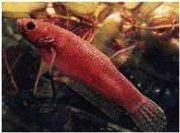
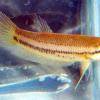 Akar
Akar 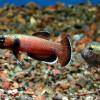 Whiteseam
Whiteseam 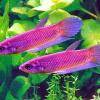 Giant
Giant 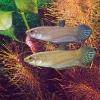 Betta
Betta 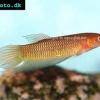 Slender
Slender 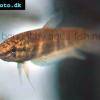 Betta
Betta 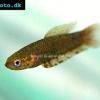 Brown’s
Brown’s 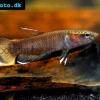 Snakehead
Snakehead 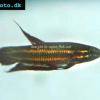 Wine
Wine 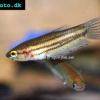 Edith’s
Edith’s 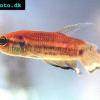 Blue
Blue 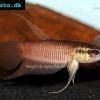 Betta
Betta 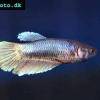 Peaceful
Peaceful 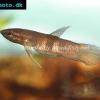 Kapaus
Kapaus 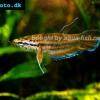 Spotted
Spotted 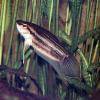 Forest
Forest 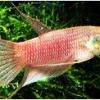 Schaller’s
Schaller’s 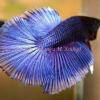 Siamese
Siamese 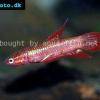 Chukai
Chukai 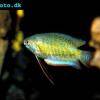 Banded
Banded 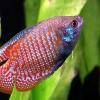 Dwarf
Dwarf 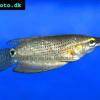 Frail
Frail 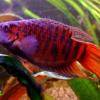 Paradise
Paradise 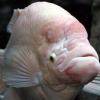 Giant
Giant 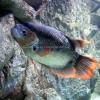 Giant
Giant 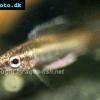 Licorice
Licorice 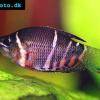 Chocolate
Chocolate 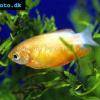 Honey
Honey 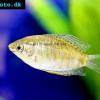 Thick
Thick 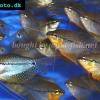 Pearl
Pearl 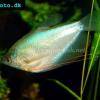 Moonlight
Moonlight 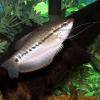 Snakeskin
Snakeskin 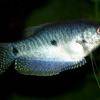 Blue
Blue